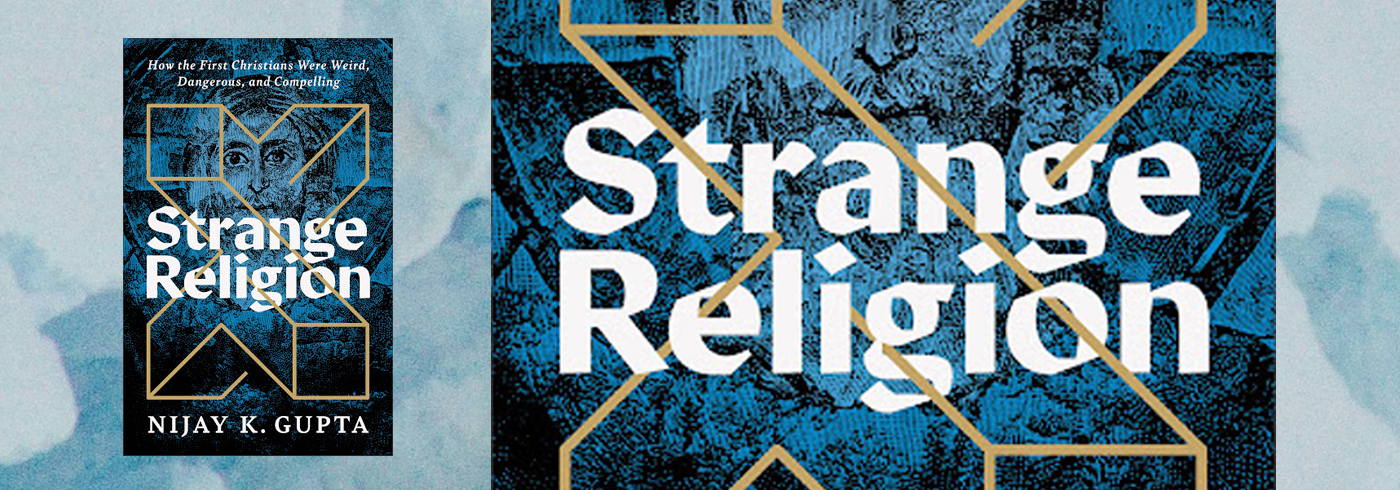When Christianity Was Weird
Review of "Strange Religion" by Nijay K. Gupta
A few years ago, I studied the Gospel of Mark with a woman from a predominantly Buddhist country. She was in the process of coming to faith in Christ and entirely new to the core concepts of Christianity.
As we read of Jesus’ healings and multiplication of food, she exclaimed, “It’s magic!”
Her words gave me pause. Christians don’t speak of God’s power that way. But because of her non-Christian worldview, “magic” was the best paradigm she had for describing Jesus’ ministry. (I gently set her straight.)
Of course, this woman wasn’t the first to misunderstand Jesus’ power or Christian beliefs about Him.
In the Christianized West, we take for granted that non-Christians understand key points on the compass of our faith. But when Christianity was growing in the first-century Greco-Roman world, those outside the faith not only mislabeled and misunderstood it, they also mistrusted it.
In Strange Religion, Nijay Gupta dives into this world and reveals why Christians were misunderstood and considered a threat to Roman society.
For instance, people sometimes thought Christians were engaging in incestuous activities when they gathered for worship. Why? Because they called one another “brother” and “sister,” practiced ritual kissing, and met in homes where their behavior was generally shielded from public view.
As Gupta explains, Romans also worried that Christianity would upset the carefully guarded pax deorum, or “peace with the gods.” Rome maintained a “political ecosystem” between civil society and the gods. Many believed the loss of this would lead to catastrophe.
Yet Christianity’s unique beliefs were often compelling and more attractive than state religion.
Gupta sheds light on the “weirdness” of Christians in the first century. But what was weird then reminds readers today of the essential and enduring features of our faith.
In four sections, Gupta provides contexts for Christianity’s strangeness, danger, and compelling attributes.
Part One, Becoming Christian, examines the role of pax deorum in the Greco-Roman world, where people offered regular “sacrifices, prayers, respect, and devotion” to secure the favor of the gods.
The “science” of Roman worship was accompanied by the hope that the gods would provide health, material resources, and protection. When a crisis occurred, it meant the gods were displeased with humans.
During this time, Christian practice emphasized the strange concept of “belief” or “faith” in a loving and devoted God, but because they did not venerate statues, they were deemed “godless” by the Romans.
Such differences led some Romans to dismiss Christianity as illegitimate, categorizing it with other foreign religions as “deviant and improper.”
Part Two, What the First Christians Believed, explores the scandal of the Church’s “impossible” beliefs. First, there was the supremacy of Jesus (a crucified criminal) over creation and all authorities.
Second, Jesus’ once-for-all sacrifice on the cross made animal sacrifice obsolete, inviting a new kind of worship that imagined Christian bodies as “living sacrifices” to God.
Third, the teaching that God did not need a terrestrial “home,” such as a temple, but instead lived within believers made Christians seem frightening.
Fourth, the way Christians adopted an “already-not yet” mentality surrounding the incarnation of Christ and the return of the Messiah, believing time’s “fullness” would be realized on that future day.
In Part Three, How the First Christians Worshiped, Gupta emphasizes the lifestyle changes adopted by Christians through their prayer gatherings, home worship meetings, redefinition of “family” to include all believers, and denial of traditional Roman household gods.
The lack of “priests” (Roman religious experts who could perform rituals or political appointees who oversaw public ceremonies) was also strange. Christians saw Jesus as their high priest and themselves as a “priestly people” whose baptisms marked them as God’s own possession.
Part Four, How the First Christians Lived, highlights key differences between Christianity and Greco-Roman mystery cults. The latter were fee-based secret societies that promised personal transformation through communion with the divine.
Gupta also contrasts the Christian call to imitate Christ with the practice of Greco-Roman philosophers modeling their lives after the “higher moral ways of the gods.” While philosophers sought power and status, Christians promoted Christlike humility.
Christianity promised to upend categories of social power and class that the Roman world only reinforced.
Finally, Gupta notes Christians didn’t always live up to biblical values. They sinned against one another and didn’t go far enough in fighting a system of slavery.
Gupta sheds light on the “weirdness” of Christians in the first century. But what was weird then reminds readers today of the essential and enduring features of our faith: complete and total allegiance to Jesus informed by expectation of the Messiah’s return; a religion “of the heart” that proclaims God’s nearness to and love for His people; and the Church as a community of goodness and loving virtue — a little taste of “heaven on earth.”
Book Reviewed
Nijay K. Gupta, Strange Religion: How the First Christians Were Weird, Dangerous, and Compelling (Grand Rapids, MI: Brazos Press, 2024).
Influence Magazine & The Healthy Church Network
© 2025 Assemblies of God

